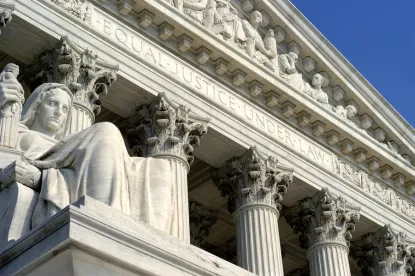Judges often advise appellate lawyers to provide in their briefs a clear path to the outcome they want. The Supreme Court of the United States recently denied review in a case that exemplified that lesson yet again.
In Baldwin v. United States, No. 19–402, the petition for certiorari argued that the Court should overrule National Cable & Telecommunications Association v. Brand X Internet Services, 545 U.S. 967 (2005). There, the Court held that a federal court must abandon its previous interpretation of a statute in favor of the implementing agency’s reasonable interpretation unless the court held the statute unambiguous. If it had not, then Chevron U.S.A. Inc. v. Natural Resources Defense Council, 467 U.S. 837, 844 (1984), required that the court apply the agency’s reasonable interpretation rather than its own precedent.
The problem is that, even though Brand X stated that its holding “follows from Chevron,” the certiorari petition did not ask that Chevron be re-examined, even though several members of the Court had previously urged just that. Instead, the petition argued that “reconsidering Brand X need not have any effect on the applicability or validity of Chevron” because the agency is refusing to obey a court’s holding of law.
That the petition promised to enmesh the Supreme Court in the difficult task of trying to unravel Brand X from Chevron soon became clear from the Solicitor General’s response. It not only noted that Brand X stated that its holding followed from Chevron but that, allowing a prior court opinion to prevent an agency from adopting a different interpretation “would contravene ‘Chevron’s premise . . . that it is for agencies, not courts, to fill statutory gaps.’” It noted that, even though then-judge Neil Gorsuch in Gutierrez-Brizuela v. Lynch had criticized Brand X, he also stated that it “does seem to follow pretty naturally” from Chevron. The Solicitor General thus observed that, even though the petition’s “arguments would apply equally to Chevron,” it provided “no sound basis . . . to overrule Brand X alone.”
An indication that the Court found this obstacle insurmountable may be found in Justice Clarence Thomas’s dissent from the denial of certiorari, where he stated that, “Brand X may well follow from Chevron, but in so doing, it poignantly lays bare the flaws of our entire executive-deference jurisprudence”—jurisprudence that the certiorari petition did not, but could have, questioned.
In sum, the petition failed to provide a clear path to the desired outcome. It did not provide the Court with a clear way to unravel Brand X from Chevron, and it failed to alternatively provide a clear path to victory—argue that Chevron be re-examined.




 />i
/>i

